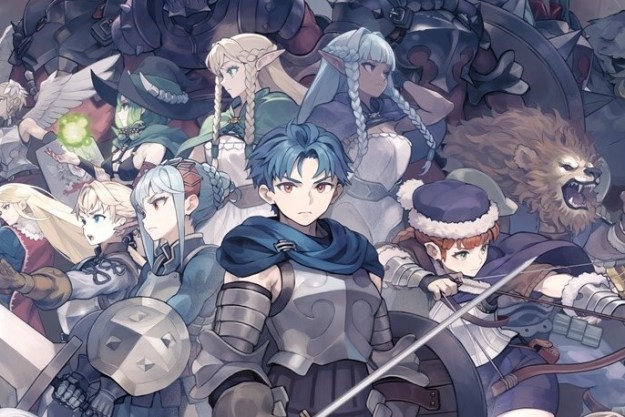Animal Crossing: New Horizons is all about customization. With the version 2.0 update, returning players are opting for a complete island overhaul, while new players have plenty of tools and toys to work with. They’ll re-shape the landscape of their island through terraforming, a mechanic that elated long-time Animal Crossing fans when it was announced in New Horizons. You will have to unlock the terraforming app, aka the Island Designer App, on your NookPhone if you plan to reshape the landmass around your island. Here’s how to unlock terraforming in Animal Crossing: New Horizons and some helpful hints on using it best.
- How to swim in Animal Crossing: New Horizons
- How to play the turnip Stalk Market in Animal Crossing: New Horizons
- Animal Crossing: New Horizons beginner’s guide
Unlocking the Island Designer app
Unfortunately, unlocking the Island Designer app takes quite a bit of time. You will have to put your island almost totally together before you’re able to change your island’s landscape, which can be a bit frustrating. To get the terraforming app, you’ll have to finish Project K, Tom Nook’s assignment, to get KK. Slider to come and perform on your island. That means that to even finish Project K, you’ll have to complete a fair amount of tasks.

The first thing you’ll have to do is build the campsite and invite the first camper that appears to live on your island. Then you’ll have to create three housing plots — those have additional DIYs that will need to be completed to get the houses built. Afterward, you’ll have to get three villagers to move into those vacant houses. Finally, you’ll need to start decorating your island with bridges, inclines, and items to get your island up to a three-star rating.
Getting a three-star rating is not as difficult as you might think. Once you get the villagers on the island, place some furniture around and plant many flowers and trees. This should help increase your island rating a little faster, particularly in the beginning.
The most annoying part of this process is that you’ll pretty much have to pay to move all of your islanders again once you get the terraforming app. It costs 50,000 bells per house to move. This whole process can be frustrating. Try to place the houses where you think you would like them (if you can).
Unlockables for the Island Designer app
Once you reach the three-star rating, Tom Nook will give you the Island Designer app on your NookPhone. Initially, the options for terraforming are limited. Right off the bat, you’ll only be able to create two types of paths: Grass and dirt. However, as you continue to terraform and build, you’ll be able to buy additional path types from the Nook Stop machine in the Residential Services building.
There are eight different paths for you to choose from and unlock. The stone, brick, dark dirt, arched tile, sand, terracotta, and wooden paths will cost around 2,000 Nook Miles. Additionally, there is the Custom Design path, which costs 2,300 Nook Miles. Each path is a little different aesthetically. As trivial as it sounds, each path will make additional noise when you walk on it. It’s fun to play around and see what path makes your island look (and sound) better.
You’ll also have the chance to unlock the waterscaping and cliff construction permits. You’ll have to buy them separately, but these two apps are the primary ways to change your island’s overall look. Each of these additions costs 6,000 Nook Miles. Although it is a bit of a steep cost, it is worth it to change everything.
Using the Island Designer app
Before diving into terraforming, it may be beneficial to plot out or get an idea of how you want your island to look. There are plenty of tools online to help you get an idea of how you want your island to come together. One of the most helpful ways to plan out your island is to use Fichman’s Island Planner tool to design how your island will look from the sky.
You may also want to familiarize yourself with the options that the Island Designer app has to offer. The game provides a manual for players to read about how each item in the Island Designer’s toolbox works and how to operate them.
Waterscaping
Waterscaping is one of the more tricky tools in the Island Designer app. It can be challenging to spot corners in a pond, smooth out rivers, or build a moat around a villager’s home. It takes a little bit of practice to use it fluidly, so be sure to be patient with yourself as you learn to use this tool.
To dig the initial trench of water, press A. If you connect a few more water tiles, pressing A around an edge will round it out. Pressing A a third time will remove the tile of water altogether.
Bridges span about four water tiles, which is essential to keep in mind when creating a new river. The tiles on each side of the river have to be flush for three or four tiles per side to support a bridge, so keep an eye open for this when creating new rivers.
It’s also worth noting that characters can jump across one tile of water. This is the perfect way to create little stones for the character to cross without paying for a new bridge. However, villagers will not cross the river without a bridge; they do not jump.
Building waterfalls is also possible with the waterscaping tool. To create a new waterfall (or expand an existing one), you’ll need to be at the base of the cliff you want your waterfall on. From there, equip the waterscaping tool and break into the cliff, which will create a waterfall. To remove a waterfall, fill it in at the top of the cliff.
Cliff construction
In contrast to the waterscaping, the cliff construction app is a little easier to use. You’ll be able to build and destroy cliffs from the base of the cliff upward. Much like rivers, cliffs can also have rounded edges. When a cluster of cliffs are together, face the corner, hit A, and the cliff will be rounded out. Pressing A again will make the cliff tile disappear completely.
You’ll only be able to build up to three tiers of cliffs — the game will not allow you to build any higher. Additionally, you won’t be able to build a cliff right on the edge of another cliff. The game forces you to allow for at least a little space to climb the wall with your ladder.
It’s also worth saying that villagers will not be able to scale cliffs. To allow villagers to access higher areas, you’ll need to build an incline leading up to where you want them to be. This also will impact villagers who have homes on cliffs with no inclines.

Pathways
When the Island Designer app is initially unlocked, you’ll only have access to dirt paths and grassy paths. Although the grassy path seems a little out of place, it’s perfect for erasing path tiles that you didn’t mean to put down. You will use different paths next to each other, but the different path types will not sit flush against one another. There will be an outline of grass around each new square of different tile pieces.
If you put tiles of the same path together, you’ll be able to make rounded corners as well. After pressing A to lay the tile down, press A again, which will round the corner. Pressing A a third time will remove the tile. This gives players a chance to get creative with how they create the paths on their island. Hearts, for example, are popular items to create out of tiles. Lay down a 3-by-3 square pattern with one corner missing, then round out the two sides nearest the empty corner.
Although there are different tile paths, each one functions a little differently. The grassy, dirt, dark dirt, and sand paths are the only types that you’ll be able to dig into. This also means that these are the only types of pathways that you’ll be able to plant flowers and trees on. Terracotta, wooden, stone, arch tiles, and brick tiles will stop flowers from growing, helping keep too many flowers from growing in an area.
One of the best ways to take advantage of the paths is to help map out where your infrastructure will lie. For example, villager houses in the game are 6-by-6 squares. You can use the dirt path to lay squares where you want to place this house. This ensures that every time you move a villager’s house, it ends up in the exact place you wanted. Additionally, when building a structure over a path, the path will automatically disappear and be replaced by the common grass.
Custom designs
Custom design tiles allow you to have more creativity and control over your island’s appearance. This tool lets you either create your type of tiles or download different codes from other creators, changing the way your pathways and island look.
These custom design tiles work like other paths but are easier to erase. These tiles can be removed simply by pressing Y, which happens by accident and can be incredibly frustrating. However, custom designs do lie flush with one another, even if they’re different patterns. This allows you to create more intricate and complex patterns and paths.
You can also layer some custom designs with standard paths. To do this, your custom design has to have at least one transparent pixel. Lay your standard path the way you want it, then put the custom design over it.
Custom designs are lovely because they’re easy to update. If you find that you want to change an aspect of your custom design path, access the Custom Design app in your NookPhone. If you switch the design in the Custom Design app, the change will automatically appear on all the corresponding squares already laid out.
Editors' Recommendations
- Is Stardew Valley cross-platform?
- Is Manor Lords cross-platform?
- Is Fallout 76 cross-platform?
- Is Call of Duty: Modern Warfare 3 cross-platform?
- Animal Well will be part of the PS Plus Game Catalog from day one




